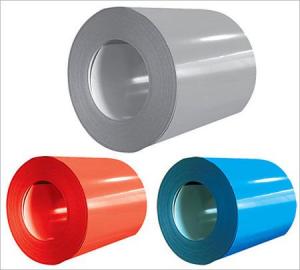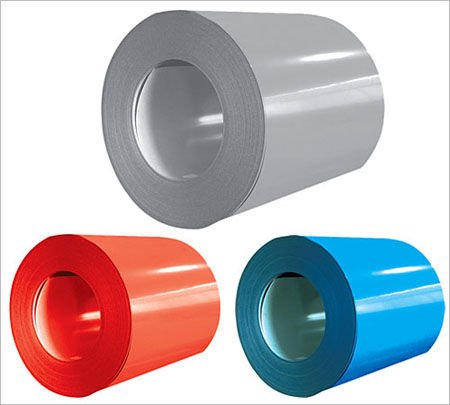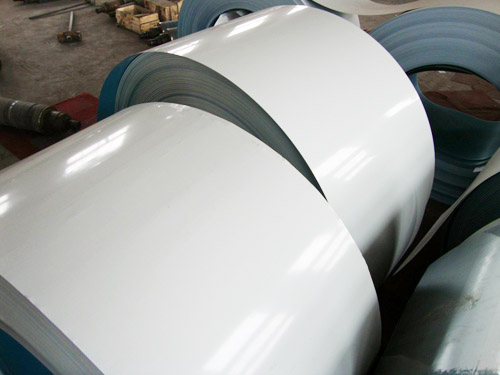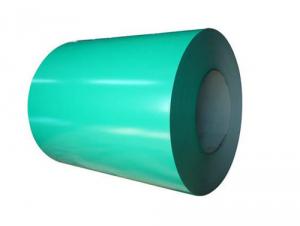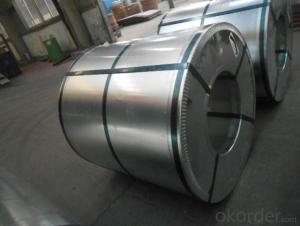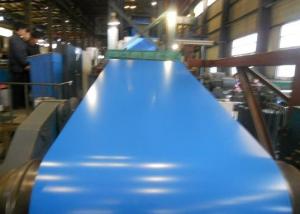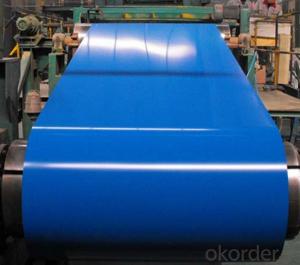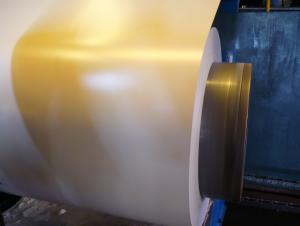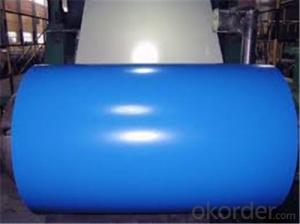Prepainted Hot-Dip Galvanized Steel Coil
- Loading Port:
- China Main Port
- Payment Terms:
- TT OR LC
- Min Order Qty:
- -
- Supply Capability:
- -
OKorder Service Pledge
Quality Product, Order Online Tracking, Timely Delivery
OKorder Financial Service
Credit Rating, Credit Services, Credit Purchasing
You Might Also Like
G550, Z60g/㎡, BMT 0.33MM, RAL9010, TOP coating: 22-25micronsSIZE MOQ0.35mm (TCT)*1200mm*C 60MTSFOB CHINA USD870/MT (Price is negotiable if u r interested)PAYMENT: 100% T/T BEFORE SHIPMENT and balance againt InvoiceSHIPMENT: 60 days After getting the payment bank slipLoading port: Tianjin, China
- Q: What we have to keep in mind before buying a steel building?
- Before okorder /... Hope this will prove helpful to you.
- Q: Can steel coils be welded?
- Yes, steel coils can be welded. Welding is a common method used to join steel coils together, whether for manufacturing purposes or repair work.
- Q: Eutectoid Steel
- Eutectic steel is used to produce pearlite, bainite, spheroidite and martensite steels. Those steels vary in strength, hardness and ductility. One uses martensite steel for example in razor blade manufacturing. Of course there is no end to the various uses of these steels.
- Q: How are steel coils used in the manufacturing of agricultural irrigation systems?
- Steel coils are used in the manufacturing of agricultural irrigation systems as they are shaped and formed into various components such as pipes, tubes, and fittings. These coils provide strength, durability, and corrosion resistance, ensuring the longevity and reliability of the irrigation system.
- Q: would you consider steel a flexible substance...i am debating this with my coworkers.Thanks,
- Yes, looking at it from an engineering standpoint. Depending on it's shape it can be used for many applications where flexibility is important. Steel springs for example, or guitar strings. Whenever you're debating these kinds of matters, it is important to keep in mind that the use of a material depends on the shape, the size and the weight it's going to be used in. A big block of steel will be used in a different manner as a piece of steel wire.
- Q: I have a Victorinox Pioneer, and I recently filed a little metal off the blade for some jimping. Is the already stainless steel blade still stainless?
- It's solid stainless steel, stainless steel is just an alloy. You might have rubbed off some of the finish of the blade. Just polish it up if it's bothering you.
- Q: does he use a nylon guitar or steel?
- He's using a nylon guitar. The trick to know whether it is nylon or steel is by looking at the headstock. steel ones use the ones you see from a regular electric guitar. the nylon ones has two major holes on them I don't know why but that's based on what i have seen. One more thing is its bridge. the nylon ones do not use pin-like stoppers to prevent the strings from falling off unlike the steel-stringed guitars that use them.
- Q: What are the different methods of slitting edge trimming for steel coils?
- Steel coils can be slit using various methods, each with its own benefits and applications. 1. Rotary Shear Slitting: This approach utilizes rotary knives mounted on a rotating shaft to cut through the steel coil. The knives create a shearing action as they pass through the coil. Rotary shear slitting is versatile, accommodating various coil thicknesses and materials. It is commonly employed for high-volume production, offering clean and precise cuts. 2. Crush Cut Slitting: This method involves pressing the steel coil against a hardened anvil with a rotating knife. The coil is cut by crushing it against the anvil. Crush cut slitting is suitable for thinner gauge materials and those sensitive to shearing forces. It provides clean cuts but may have limitations in terms of coil thickness and width. 3. Razor Slitting: Razor slitting employs a razor blade mounted on a rotating shaft to slice through the steel coil. This method is commonly used for thin and delicate materials that require precise and burr-free edges. While it provides clean cuts, it may be limited in terms of coil thickness and width. 4. Shear Slitting: This approach utilizes a pair of opposing blades to shear through the steel coil. The blades move past each other, creating a scissor-like cutting action. Shear slitting is commonly used for heavier gauge materials, offering clean and precise cuts. It is suitable for high-speed production and can handle a wide range of coil thicknesses and materials. 5. Laser Slitting: Laser slitting employs a high-powered laser beam guided by computer-controlled optics to cut through the steel coil. It offers precise and clean cuts and is suitable for various coil thicknesses and materials, including high-strength steels. Laser slitting provides a high level of accuracy and can handle complex cutting patterns. Each method has its own advantages and considerations, depending on the specific requirements of the steel coil slitting operation. Factors such as coil thickness, material type, desired edge quality, and production volume will influence the choice of slitting method.
- Q: Ok, so im gonna get my tragus pierced and i was wondering which is better, titanium or stainless steel. I hear like everyone uses stainless steel , but is titanium better?Thanks
- Ttitanium is better.
- Q: What are the different methods of coil recoiling for narrow strip widths?
- There are several different methods of coil recoiling for narrow strip widths. One method is known as slitting and recoiling, which involves cutting the wide coil into narrower strips and then rewinding them onto a smaller coil. This is typically done using a slitting machine, which can make precise cuts to create the desired strip widths. Another method is known as edge trimming and recoiling. In this process, the edges of the wide coil are trimmed to create narrower strips, and then the remaining material is rewound onto a smaller coil. This method is often used when the edges of the coil are damaged or uneven and need to be removed before recoiling. Additionally, there is a method called tension recoiling. In this process, the wide coil is passed through a series of tensioning devices that help to create the desired strip widths. The tensioning devices can apply controlled pressure to the edges of the coil, allowing for precise recoiling of narrow strips. Furthermore, some companies use laser cutting technology for coil recoiling. This method involves using a laser beam to cut the wide coil into narrow strips, followed by rewinding onto a smaller coil. Laser cutting offers high precision and accuracy, making it an ideal option for narrow strip widths. Overall, the different methods of coil recoiling for narrow strip widths include slitting and recoiling, edge trimming and recoiling, tension recoiling, and laser cutting. Each method has its own advantages and is chosen based on the specific requirements and capabilities of the manufacturing process.
Send your message to us
Prepainted Hot-Dip Galvanized Steel Coil
- Loading Port:
- China Main Port
- Payment Terms:
- TT OR LC
- Min Order Qty:
- -
- Supply Capability:
- -
OKorder Service Pledge
Quality Product, Order Online Tracking, Timely Delivery
OKorder Financial Service
Credit Rating, Credit Services, Credit Purchasing
Similar products
Hot products
Hot Searches
Related keywords
